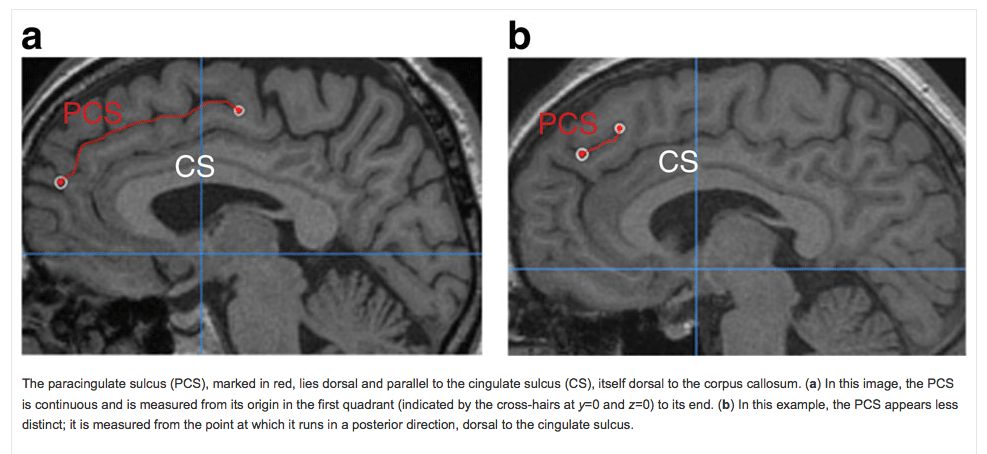
Hearing the Voice researchers were pleased to collaborate with Jane Garrison, Jon Simons and their colleagues on a recent study investigating the brain structures underlying hallucinations in people with a diagnosis of schizophrenia.
The study, which was published earlier this month in the journal Nature Communications, analysed 153 structural MRI scans of people diagnosed with schizophrenia and matched control participants, measuring the length of a particular fold towards the front of each participant’s brain – the paracingulate sulcus (PCS).
The study focused on the PCS because previous research has shown that this region of the brain is linked with our ability to distinguish reality from imagination.
What it found was that in people with a diagnosis of schizophrenia, a 1 cm reduction in sulcus length led to an increase in the likelihood of hallucinations by nearly 20%. Moreover, sulcus length did not differ between those people with a diagnosis of schizophrenia who did not experience hallucinations and the control individuals. This is important because it suggests that sulcus length specifically relates to the experience of hallucinations and is independent of whether or not someone meets the criteria for a particular psychiatric diagnosis, such as schizophrenia.
Investigating differences in brain structure is only a small part of understanding hallucinations and other unusual experiences. It is not clear from the present study, for example, whether the length of the PCS is the cause or the effect of having unusual perceptions. In this case, we think that the length of the PCS is related to a person’s ability to distinguish internally generated from externally generated information. In terms of the specific experience of hearing voices, this could provide support for the view that some voices arise as a result of errors in reality monitoring; for example, when someone mistakenly attributes an episode of inner speech – one of their own thoughts – to an external source. However, voice-hearing experiences are extremely complex, and there is likely to be more than one explanation of why and how it is they arise.
Anyone who would like more information about the study is welcome to download the full paper freely here:
Jane Garrison, Charles Fernyhough, Simon McCarthy-Jones, Mark Haggard, the Australian Schizophrenia Research Bank and Jon Simons, ‘Paracingulate sulcus morphology is associated with hallucinations in the human brain’, Nature Communications, November 2015.
Further information:
Jonathan Webb, ‘Frontal brain wrinkle linked to hallucinations‘, BBC News, 17 November 2015
‘Region of brain “shorter” in people with hallucinations‘, NHS Choices, 18 November 2015
Charlotte Rae, ‘Hallucinations? They may just be caused by a fold in the brain‘, The Conversation, 24 November 2015
‘Hallucinations linked to differences in brain structure’, University of Cambridge Research blog, 17 November 2015
